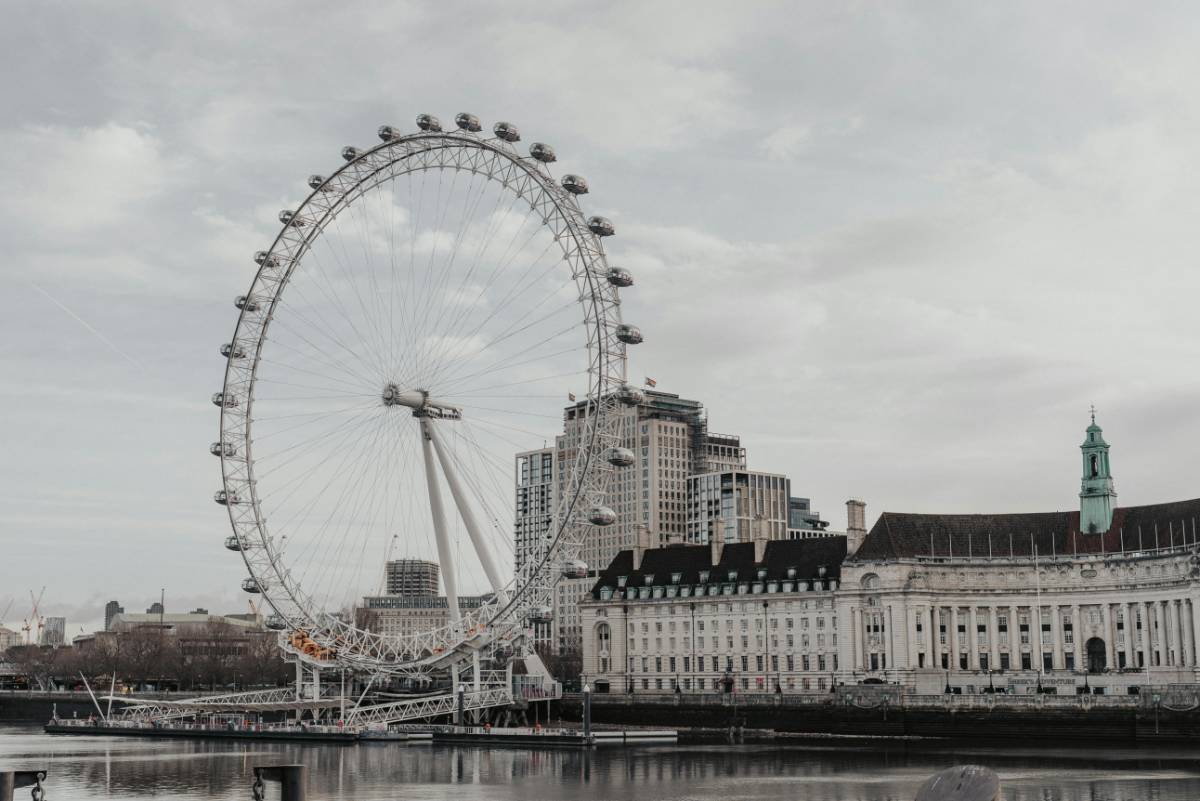
Street food is an essential part of many cultures around the world, offering a quick, affordable, and delicious way to experience local cuisine. From bustling markets in Asia to food carts on city streets, street food brings people together, offering a taste of authenticity that can't be found in fine-dining restaurants. Here’s a guide to some of the most iconic street foods around the world.
 Tacos, Mexico
Tacos, MexicoMexican tacos are among the most popular street foods worldwide, and for good reason. Whether served on soft corn tortillas or crispy shells, tacos can be filled with a variety of meats, seafood, or vegetables, topped with fresh salsa, onions, cilantro, and lime. Some of the most common fillings include carne asada (grilled beef), carnitas (slow-cooked pork), and al pastor (spit-grilled pork). Street vendors can be found on almost every corner in Mexico, making tacos the ultimate street food experience.
One of the best ways to enjoy tacos is at a local taquería, where the tortillas are made fresh and the fillings are seasoned to perfection. Pair them with a refreshing agua fresca or a cold beer to complete the experience.
Banh Mi, VietnamBanh Mi is a delicious Vietnamese sandwich that combines the flavors of French colonialism with traditional Vietnamese ingredients. Served on a baguette, this street food is filled with a variety of proteins, including grilled pork, chicken, or tofu, and topped with pickled vegetables, cilantro, chili peppers, and a spread of mayonnaise or pâté.
Banh Mi can be found at food stalls and small eateries throughout Vietnam, particularly in cities like Hanoi and Ho Chi Minh City. The balance of flavors—crispy bread, savory meat, tangy pickles, and spicy chili—makes this sandwich a must-try for any food lover.
Pad Thai is one of Thailand’s most beloved street foods, and it’s easy to see why. This flavorful stir-fried noodle dish combines rice noodles, shrimp or chicken, eggs, tofu, and a mix of peanuts, lime, and chili, all cooked together in a sweet and tangy tamarind sauce. Often served with bean sprouts and lime wedges, Pad Thai is a delicious and satisfying meal that can be enjoyed on the go.
Street vendors in Thailand prepare Pad Thai fresh to order, and it's often cooked right in front of you on a sizzling wok. Whether you’re in Bangkok or Chiang Mai, this dish is a true taste of Thai cuisine.
Samosas are a popular street food throughout India and other parts of South Asia. These deep-fried pastries are filled with a variety of ingredients, including spiced potatoes, peas, and meat, and are served with a tangy chutney for dipping. The golden, crispy crust and flavorful filling make samosas a perfect snack or light meal.
You can find samosas at food stalls, street corners, and markets across India, often served in sets of two or three with a side of tamarind or mint chutney. They’re perfect for snacking on while walking through bustling markets in cities like Delhi, Mumbai, or Kolkata.
 Falafel, Middle East
Falafel, Middle EastFalafel is a beloved street food throughout the Middle East and beyond. These crispy, deep-fried balls are made from ground chickpeas or fava beans, mixed with herbs and spices like garlic, cumin, and coriander. Falafel is typically served in pita bread or flatbreads, with fresh vegetables like tomatoes, cucumbers, and lettuce, and drizzled with tahini or yogurt sauce.
In countries like Lebanon, Israel, and Egypt, falafel is sold by street vendors, often at food carts or small eateries. It’s a great vegetarian option and makes for a hearty, flavorful meal on the go.
Churros, SpainChurros are a popular Spanish street snack, enjoyed at breakfast or as a sweet treat throughout the day. These deep-fried dough sticks are crispy on the outside and soft on the inside, often dusted with sugar or cinnamon. In Spain, churros are commonly served with a cup of thick hot chocolate for dipping—a delicious pairing that makes for an indulgent treat.
Churros can be found in many Spanish cities, especially at outdoor markets, street food stalls, and cafés. They’re also commonly sold at fairs and festivals, where they’re made fresh to order, offering the ultimate street food experience.
Satay, IndonesiaSatay is a popular street food in Indonesia, consisting of skewered and grilled meat, often served with a savory peanut sauce. The meat can vary from chicken, beef, and pork to fish and tofu, depending on the region. Satay is typically served with a side of rice or a small salad, and the rich, flavorful peanut sauce adds a unique depth of flavor to the dish.
Street vendors across Indonesia, particularly in cities like Jakarta and Bali, prepare satay on open grills, and it’s common to see long lines at popular satay stalls during evening hours. The combination of smoky grilled meat and savory sauce makes satay a must-try street food.
Kebabs, TurkeyKebabs are a quintessential street food in Turkey, with many variations to try depending on the region. The most common type of kebab is döner, made from seasoned meat (usually lamb, beef, or chicken) that’s cooked on a vertical rotisserie. Thin slices of meat are shaved off the rotisserie and served in flatbread or pita, often with tomatoes, lettuce, onions, and a tangy yogurt sauce.
Döner kebabs are widely available throughout Turkey, particularly in cities like Istanbul, where they’re served at food stalls, restaurants, and even late-night kebab joints. Kebabs are a satisfying and flavorful meal, perfect for satisfying your hunger while exploring Turkish cities.
Poffertjes, NetherlandsPoffertjes are small, fluffy Dutch pancakes that are a popular street food in the Netherlands. Made with yeast and buckwheat flour, these mini pancakes are cooked on a special griddle and served hot, dusted with powdered sugar and often drizzled with butter or syrup. Poffertjes are often enjoyed as a snack or dessert and are typically sold at street markets and festivals.
In cities like Amsterdam, Rotterdam, and Utrecht, you can find poffertjes being prepared fresh at food stalls, offering the perfect treat for sweet tooths looking to satisfy their cravings while exploring the city.
ConclusionStreet food is one of the most exciting ways to explore a new culture, offering a direct connection to local traditions and flavors. Whether you're enjoying tacos in Mexico, falafel in the Middle East, or churros in Spain, each bite tells a story of the country’s heritage and culinary history. So next time you travel, be sure to venture off the beaten path and sample some of the incredible street food the world has to offer.
The best of Business news, in your inbox.

Legal Strategist & Thought Leader
Stefen brings a strategic legal mindset with a passion for translating legal complexities into digestible insights. Their articles reflect a deep understanding of justice, rights, and reform.
Read more from Stefen
As we step into 2024, a new array of travel destinations awaits, each offering unique experiences and breathtaking sights. Whether you're looking for natural beauty, cultural immersion, or vibrant city life, here are the top destinations to consider adding to your travel list this year.1153a.jpg***1. Kyoto, JapanKnown for its serene temples, beautiful cherry blossoms, and traditional tea houses, Kyoto is a city that blends history with tranquility. Visitors can explore ancient shrines, stunning bamboo forests, and the vibrant Geisha districts, all while enjoying Japan’s renowned hospitality.***2. Cape Town, South AfricaWith its stunning coastline, mountains, and diverse wildlife, Cape Town offers a mix of adventure and relaxation. The city's rich history, cultural sites, and outdoor activities make it a top choice for 2024. Don’t miss the chance to visit Table Mountain and the beautiful beaches along the Cape Peninsula.***3. Medellín, ColombiaMedellín, once known for its turbulent past, has transformed into a vibrant, innovative city. With lush green landscapes, pleasant weather, and a lively arts scene, Medellín offers travelers an affordable, culturally rich experience. Enjoy its friendly neighborhoods, and be sure to explore its bustling markets and coffee farms.1153b.jpg***4. Auckland, New ZealandAuckland is a paradise for nature lovers, offering stunning coastlines, volcanic landscapes, and a welcoming culture. Known as the "City of Sails," it’s perfect for water activities, hikes, and exploring Maori culture. Auckland’s lively waterfront, markets, and art galleries add to its charm.***5. Lisbon, PortugalLisbon is quickly becoming a favorite among travelers for its rich history, sunny weather, and vibrant neighborhoods. With its picturesque streets, delicious food, and impressive landmarks, Lisbon combines the best of European culture with a laid-back vibe. Be sure to visit the iconic Belém Tower and try some pastéis de nata.***6. BhutanThis Himalayan kingdom, known for its commitment to happiness and environmental preservation, offers travelers an enchanting escape. Bhutan’s monasteries, stunning landscapes, and preserved traditions create a peaceful retreat for those looking to immerse themselves in spiritual and cultural experiences.***ConclusionThese top travel destinations for 2024 each offer unique experiences, whether you’re seeking adventure, relaxation, or cultural exploration. Each place brings something special, inviting you to make unforgettable memories. So, pack your bags and get ready for a year filled with new journeys and discoveries!

Traveling by air can be one of the most expensive parts of a trip, but with a little bit of planning and strategy, you can significantly reduce the cost of your airfare. Whether you're planning a weekend getaway or an international adventure, there are several insider tips that can help you save money and score the best deals. Here are some expert tips to help budget travelers save on airfare.1303a.jpg***Book Early (But Not Too Early)One of the most common pieces of advice for saving on airfare is to book early. While booking in advance can often result in lower prices, there’s a sweet spot to aim for. For domestic flights, the best time to book is typically 1-3 months before departure. For international flights, try to book 2-6 months in advance. Booking too far in advance or waiting until the last minute can lead to higher prices.Try to avoid booking flights too early or too late, as both can be costly. Track flight prices over time to identify the best time to book.***Be Flexible with Your Travel DatesFlexibility is key when trying to save on airfare. Flights can vary dramatically in price depending on the day of the week, time of day, and time of year. Typically, mid-week flights (Tuesday, Wednesday, and Thursday) are less expensive than weekend flights, as fewer people travel on those days.Consider traveling during off-peak seasons. Avoid popular vacation times like summer, holidays, and school breaks. Flying in the shoulder season or off-season can result in significantly cheaper fares.***Use Fare Comparison Websites and AppsTo find the best airfare deals, use fare comparison websites and apps like Google Flights, Skyscanner, and Kayak. These platforms allow you to compare prices across different airlines and booking sites, helping you find the lowest price available for your chosen route.Set up fare alerts to be notified when prices drop for your desired flight. Many sites and apps offer this feature, allowing you to track fluctuations in ticket prices and book when the price is right.1303b.jpg***Consider Nearby AirportsWhen searching for flights, don’t limit yourself to just the main airport in your destination city. Many major cities have multiple airports, and flying into or out of a secondary airport can save you money. Be sure to factor in transportation costs to and from the airport when considering this option.For example, if you’re flying into New York City, check flights to airports like LaGuardia, JFK, or Newark. A flight into one airport may be cheaper, even after accounting for the cost of ground transportation to your accommodation.***Fly on Budget AirlinesBudget airlines like Southwest, Ryanair, and Spirit often offer significantly cheaper fares compared to traditional carriers. While these airlines may charge for extras like checked luggage, seat selection, and snacks, they can still be a cost-effective option for budget-conscious travelers.Keep an eye out for flash sales and promotions from budget airlines. Signing up for their email newsletters or following them on social media can help you stay informed about special deals and discounts.***Use Airline Miles and PointsIf you’re a frequent traveler, using airline miles or credit card points can be a great way to save on airfare. Many credit cards offer travel rewards that can be redeemed for flights, hotel stays, and more.Sign up for frequent flyer programs with airlines to accumulate miles that can be redeemed for future flights. Even if you don’t fly often, you can still take advantage of credit card reward programs to earn points toward flights.***Book Connecting Flights Instead of NonstopNonstop flights are often more convenient, but they can also be more expensive. If you're willing to add a little extra time to your trip, consider booking a connecting flight instead of a direct route. Connecting flights can be cheaper, especially if you have flexibility with your travel time and destinations.Check different layover options to find the best deals, but be mindful of long layovers that could add unnecessary time to your journey.***Check for Deals on Social MediaMany airlines and travel companies post exclusive deals and discounts on their social media channels. Follow airlines, travel agencies, and deal sites like Secret Flying or The Flight Deal to catch flash sales and promotions that might not be advertised on fare comparison websites.Social media platforms are also a great way to stay updated on last-minute sales and special offers from airlines.***Be Aware of Hidden FeesWhile a flight might look like a great deal at first glance, make sure to factor in all potential fees. Budget airlines and even some major carriers often charge additional fees for baggage, seat selection, and other services. Be sure to read the fine print before booking to avoid unexpected costs.Consider whether you need checked luggage or if you can make do with just a carry-on. If you're traveling light, you can save money by avoiding checked baggage fees.***ConclusionSaving on airfare doesn’t have to be difficult. By using these insider tips—booking at the right time, being flexible with your travel dates, comparing prices across multiple platforms, and using rewards points—you can save significant amounts on your flight tickets. With a little planning, you can fly to your next destination without breaking the bank!

Booking last-minute travel deals can be an exciting yet challenging task. Many travelers believe that booking in advance is the only way to get the best prices, but that's not always true. With the right strategies and tips, you can snag incredible deals even at the last minute. Here are some proven tips for booking last-minute travel deals without breaking the bank.1318a.jpg***Use Travel Deal Websites and AppsOne of the easiest ways to find last-minute travel deals is by using travel deal websites and apps. Platforms like Skyscanner, Kayak, and Google Flights allow you to compare prices across various airlines, booking sites, and dates. Many of these platforms also feature price alerts that notify you when there's a significant price drop for your desired destination.For last-minute deals, websites like Lastminute.com and Secret Escapes specialize in offering discounted prices on flights, hotels, and holiday packages that are available for immediate travel. Don’t forget to check travel apps that offer last-minute hotel bookings like HotelTonight, which often provides great savings on unsold hotel rooms.***Be Flexible with Your Travel Dates and LocationFlexibility is key when booking last-minute deals. Airlines and hotels often offer significant discounts on flights and rooms that depart or are available within the next few days or weeks. If you’re flexible with your travel dates, you’ll have a better chance of securing these deals.Likewise, being open to alternative destinations or nearby airports can help you save money. For example, if a flight to your original destination is too expensive, look for nearby cities and check the costs of local transportation to reach your final destination. Traveling during off-peak seasons or weekdays can also lower your chances of paying high prices.1318b.jpg***Sign Up for Fare AlertsSetting up fare alerts is one of the best ways to monitor price drops on flights. Websites like Skyscanner, Airfarewatchdog, and Google Flights allow you to enter your destination and receive instant email notifications when prices fall. By keeping an eye on these alerts, you can jump on the best deals before they disappear.Airlines sometimes offer flash sales and discount promotions through email newsletters. Signing up for your favorite airline's email list or loyalty program can provide you with early access to exclusive offers and last-minute deals.***Consider Alternative AirportsMajor airports often have higher flight prices due to increased demand. If you're flexible with your arrival or departure, consider using smaller or alternative airports. You may find that flying into or out of an airport a little further from your original destination could save you hundreds of dollars.When looking for flights, use flight comparison tools to check multiple airports near your destination. For example, if you're flying to New York City, you might find cheaper options flying into Newark instead of JFK or LaGuardia. Always weigh the cost savings against any additional travel time to your final destination.***Book Flights During Off-Peak HoursAnother effective strategy is to book your last-minute flight during off-peak hours. Flights tend to be cheaper during late-night or early-morning hours when demand is lower. If you can manage an early departure or a late arrival, you may be able to find more affordable options.Many airlines offer lower-priced tickets on flights that are expected to have fewer passengers. Booking flights that depart in the early morning or late evening hours can increase your chances of finding a last-minute deal.***Use Airline Miles or Points for DiscountsIf you’re a frequent traveler, using airline miles or credit card points can help offset the cost of a last-minute flight. Many airlines allow you to use accumulated miles for both flights and hotel stays, making last-minute travel more affordable.You can also consider using points for hotel bookings and car rentals, allowing you to save on the overall cost of your trip. Be sure to check your airline's rewards program for special deals or offers available for last-minute bookings.***Check Out Package DealsSometimes, last-minute package deals that include flights, hotels, and car rentals offer significant savings. Websites like Expedia, Travelocity, and Priceline allow you to book all-inclusive travel packages at a discount when booked within a few days of departure.Package deals are a great way to save time and money, as they bundle everything you need for a trip into one affordable package. Even if you’re booking last-minute, these deals can still offer discounts and perks that individual bookings might not provide.***Don’t Forget to NegotiateAlthough it may seem intimidating, negotiating with hotels, car rental companies, and tour operators can sometimes lead to lower prices, especially when you're booking last-minute. If you're contacting a hotel directly or booking through a platform, ask about any unlisted discounts or last-minute offers they may have available. Sometimes, they’re willing to lower prices just to fill vacancies.Additionally, when booking a car rental, ask about special promotions, or see if they’ll offer a discount for a last-minute booking. A little negotiation can go a long way in making your trip more affordable.***ConclusionBooking last-minute travel deals can be a great way to save money if you follow the right strategies. Be flexible with your travel dates and location, use travel deal websites and fare alerts, consider alternative airports, and don’t be afraid to negotiate. With a little patience and flexibility, you can book a fantastic trip without spending a fortune. So, the next time you're in a pinch and need to travel quickly, use these tips to book an affordable and memorable last-minute vacation.

The underwater world is full of wonders that few ever get to experience. From vibrant coral reefs to submerged shipwrecks, diving is an incredible way to explore the beauty beneath the waves. If you’re an adventure seeker or simply someone who enjoys discovering new places, here are some of the top diving spots across the globe.1333a.jpg***Great Barrier Reef, AustraliaAs the world’s largest coral reef system, the Great Barrier Reef in Australia is a must-visit destination for divers. Stretching over 2,300 kilometers, this UNESCO World Heritage site is home to a vast array of marine life, including colorful coral, sea turtles, sharks, and thousands of fish species.Divers can explore numerous dive sites, from shallow reef gardens to deep-water walls. The clear waters make it an ideal location for both beginners and experienced divers. Whether you’re diving at the Ribbon Reefs or the iconic Cod Hole, the Great Barrier Reef offers an unforgettable underwater experience.***Blue Hole, BelizeThe Blue Hole, located off the coast of Belize, is one of the most famous dive sites in the world. This giant underwater sinkhole is over 300 meters wide and 124 meters deep, offering a surreal experience for divers. The Blue Hole is part of the Belize Barrier Reef, which is a UNESCO World Heritage site.The dive is famous for its crystal-clear waters and impressive underwater stalactites and stalagmites. As divers descend, they can see schools of fish, nurse sharks, and even the occasional hammerhead shark. The Blue Hole offers a unique and awe-inspiring diving adventure.***Raja Ampat, IndonesiaRaja Ampat, located in Indonesia’s Papua province, is often considered one of the best diving destinations in the world. The region boasts an incredible diversity of marine life, including over 1,500 species of fish and 600 species of coral.With its remote location and pristine waters, Raja Ampat is home to some of the most spectacular dive sites on the planet. Divers can explore vibrant coral reefs, underwater caves, and lush seagrass meadows, all teeming with marine life. This remote paradise is a haven for divers seeking an untouched underwater world.***Galápagos Islands, EcuadorThe Galápagos Islands, located off the coast of Ecuador, are known for their unique wildlife both on land and underwater. The islands' underwater ecosystems are rich with marine life, including sea lions, manta rays, whale sharks, and schools of hammerhead sharks.Diving in the Galápagos offers the chance to explore underwater volcanic landscapes and crystal-clear waters. The islands’ isolation has preserved a rich diversity of species, making it an exceptional destination for those looking to dive in a place where nature is truly in charge.***The MaldivesThe Maldives is famous for its stunning white-sand beaches, crystal-clear waters, and luxury resorts, but it is also one of the world’s top diving destinations. The archipelago, consisting of over 1,000 islands, offers incredible opportunities to dive with manta rays, whale sharks, and vibrant coral reefs.The Maldives is perfect for all levels of divers, from beginners who can explore the shallow lagoons to experienced divers who can venture into deeper channels. The coral gardens and colorful reef fish make this destination a paradise for underwater photography.1333b.jpg***Palau, MicronesiaPalau, a small island nation in Micronesia, is known for its pristine diving conditions. The island is surrounded by crystal-clear waters and is home to some of the most diverse marine ecosystems in the world. Diving in Palau’s famous Jellyfish Lake offers the unique experience of swimming with millions of non-stinging jellyfish.In addition to Jellyfish Lake, Palau is also known for its spectacular wall dives, where divers can see massive coral formations, schools of fish, and even manta rays. The rich biodiversity of Palau’s underwater ecosystems makes it an exciting and unforgettable dive destination.***Cozumel, MexicoCozumel, located off the coast of Mexico’s Yucatán Peninsula, is one of the top dive spots in the Caribbean. Known for its crystal-clear waters and vibrant coral reefs, Cozumel attracts divers from all over the world.The island offers a variety of dive sites, including shallow reefs perfect for beginners and deep walls for advanced divers. The waters around Cozumel are teeming with marine life, including sea turtles, rays, and a variety of fish species. Cozumel is also a great place for drift diving, where divers can let the current guide them through the colorful reefs.***Shark Bay, South AfricaShark Bay, located off the coast of South Africa, is home to one of the most thrilling dive experiences in the world – cage diving with great white sharks. Shark Bay is known for its abundant marine life, including dolphins, seals, and of course, great white sharks.For the more adventurous diver, cage diving offers a close-up view of these majestic creatures. Whether you’re diving with sharks or exploring the area’s kelp forests and coastal reefs, Shark Bay promises an unforgettable dive.***ConclusionThe world’s top diving spots offer some of the most incredible underwater experiences. Whether you’re exploring coral reefs in Belize or swimming with manta rays in the Maldives, there is a dive destination for every type of adventurer. These breathtaking locations showcase the beauty and diversity of marine ecosystems and are perfect for anyone looking to immerse themselves in the wonders of the underwater world.